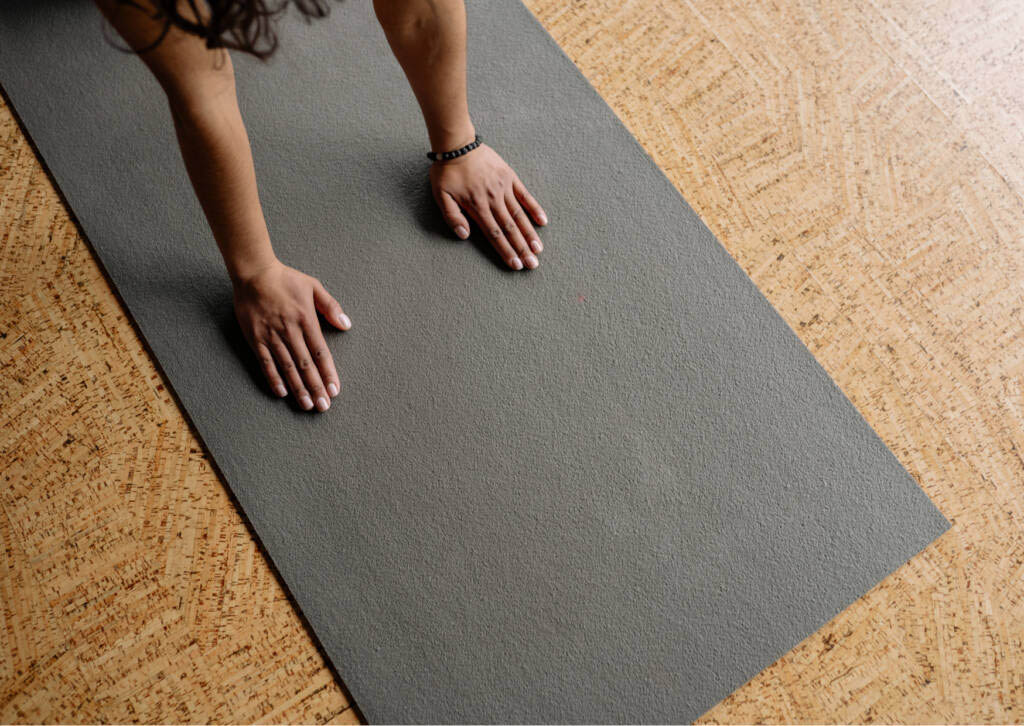Yoga, an ancient practice originating from India, is gaining popularity worldwide. Initially associated with mystical rituals and spiritual quests, it is now recognized as one of the most comprehensive forms of physical and mental activity. Regular practice of yoga offers numerous benefits for both the body and the mind. In this article, we will analyze the exact benefits that result from practicing yoga.
History and Philosophy of Yoga

Where Did Yoga Come From?
Yoga has its roots in ancient India, where it developed as a spiritual and philosophical practice. The earliest mentions of yoga come from texts dating back thousands of years, such as the Vedas and Upanishads. However, Patanjali, the author of the “Yoga Sutras,” is often credited as the father of modern yoga. In his work, he systematizes the practices of yoga, including asanas (postures), pranayama (breath control), and meditation.
The Philosophy of Yoga
Yoga is not just a set of physical exercises. It is a holistic practice that encompasses the body, mind, and spirit. A central element of the philosophy of yoga is the pursuit of balance and harmony in all aspects of life.
Key concepts include:
- Yama: moral principles
- Niyama: personal practices
- Asana: body postures
- Pranayama: breath control
- Pratyahara: sensory withdrawal
- Dharana: concentration
- Dhyana: meditation
- Samadhi: enlightenment
These eight paths, known as Ashtanga (the eight limbs of yoga), lead to self-realization and union with the absolute.
Physical Benefits of Yoga

Improved Flexibility
One of the most obvious and noticeable effects of regular yoga practice is increased body flexibility. Regular performance of asanas allows for the stretching and strengthening of muscles and tendons, which translates into greater freedom of movement.
Benefits:
- Greater freedom of movement
- Reduced risk of injury
- Improved posture
Flexibility is crucial for maintaining muscle and joint health. Asanas like Downward-Facing Dog (Adho Mukha Svanasana), Forward Bend (Uttanasana), or Bridge Pose (Setu Bandhasana) help stretch and strengthen various parts of the body, leading to an overall improvement in flexibility.
Muscle Strengthening
Yoga engages different muscle groups, leading to their strengthening. Regular practice not only improves the appearance of the body but also increases strength and endurance. Asanas like Plank (Phalakasana), Warrior (Virabhadrasana), or Chair Pose (Utkatasana) require maintaining the body in various positions, which engages the muscles to work.
Benefits:
- Stronger abdominal, back, and leg muscles
- Better body stabilization
- Increased functional strength
Strengthening muscles has not only aesthetic value but also functional importance. Strong abdominal and back muscles help maintain proper body posture, reducing back pain and improving daily comfort.
Better Balance
Practicing asanas that require balance helps develop the ability to control the body. This, in turn, translates into better coordination and stability. Asanas like Tree Pose (Vrksasana), Eagle Pose (Garudasana), or Half Moon Pose (Ardha Chandrasana) require focus and precision, which improves balance.
Benefits:
- Reduced risk of falls
- Better motor coordination
- Improved proprioception (awareness of the body in space)
Better balance is especially important for older people, who are at greater risk of falls. Regular yoga practice can significantly reduce this risk by improving stability and motor coordination.
Supporting the Cardiovascular System
Yoga, especially more dynamic forms like Vinyasa or Ashtanga, can positively affect the cardiovascular system. Regular practice supports heart function and improves blood circulation. Asanas like Bridge Pose (Setu Bandhasana), Revolved Triangle Pose (Parivrtta Trikonasana), or Downward-Facing Dog (Adho Mukha Svanasana) help improve circulation and oxygenation of the body.
Benefits:
- Better oxygenation of the body
- Lower blood pressure
- Reduced risk of cardiovascular diseases
Research has shown that regular yoga practice can lower blood pressure and improve lipid profiles, reducing the risk of cardiovascular diseases. Yoga also improves the elasticity of blood vessels, promoting better blood circulation.
Mental and Emotional Benefits

Stress Reduction
Yoga, especially breathing techniques and meditation, helps reduce stress and tension. Focusing on breathing and the present moment allows you to detach from everyday problems. Techniques like Pranayama (breath control), meditation, and relaxation help calm the mind and reduce stress.
Benefits:
- Lower cortisol levels (stress hormone)
- Improved mood
- Increased calm and relaxation
Regular yoga practice can significantly lower cortisol levels in the body, which translates into reduced stress and improved overall well-being. Yoga also helps develop skills to cope with stress and tension in daily life, which ultimately has a positive impact on cellular aging.
Improved Sleep Quality
Practicing yoga can lead to better sleep quality. Relaxation asanas, breathing techniques, and meditation help calm the mind and prepare the body for sleep. Practices like Yoga Nidra (yoga sleep), relaxation, and meditation help calm the mind and body before sleep.
Benefits:
- Falling asleep faster
- Deeper sleep
- Fewer sleep problems
Research has shown that regular yoga practice can improve sleep quality and reduce sleep problems, such as insomnia. Yoga helps calm the mind and reduce stress, which translates into better sleep.
Increased Self-Awareness
Yoga helps develop self-awareness and introspection. Through practice, we learn to better understand our body, thoughts, and emotions. Meditation, pranayama, and asanas help develop observation and introspection skills, leading to greater self-awareness.
Benefits:
- Better emotional management
- Greater self-acceptance
- Increased empathy and compassion
Increased self-awareness allows for better emotional management and the development of skills to cope with difficult situations. Yoga helps develop empathy and compassion, improving interpersonal relationships.
Yoga and Mental Health

Reduction of Depression and Anxiety Symptoms
Research shows that regular yoga practice can help reduce symptoms of depression and anxiety. Yoga affects the chemical balance in the brain, increasing the levels of neurotransmitters like serotonin and dopamine, which are responsible for our mood.
Benefits:
- Reduced symptoms of depression
- Anxiety reduction
- Improved mood
Breathing techniques, meditation, and relaxation help calm the mind and reduce anxiety symptoms. Regular yoga practice can also help reduce symptoms of depression, improving overall well-being and mood.
Increased Concentration and Attention
Yoga, especially meditation techniques, helps increase concentration and attention. Focusing on breathing and the present moment helps develop concentration and attention skills.
Benefits:
- Better concentration
- Increased attention
- Improved memory
Regular yoga practice can help increase concentration and attention, which translates into better functioning in daily life. Yoga also helps develop concentration and attention skills, improving memory and cognitive abilities.
Yoga for Everyone

One of yoga’s greatest advantages is its universality. Regardless of age, gender, or fitness level, everyone can benefit from its practice. There are many styles of yoga that can be tailored to individual needs and abilities.
Styles of Yoga
Hatha Joga: Ideal for beginners, focusing on basic asanas and breathing techniques. It is a calm and gentle form of yoga that helps stretch and strengthen the body.
Vinyasa Joga: A dynamic practice that combines movement with breath. It is a more intense form of yoga that helps improve physical fitness and endurance.
Yin Joga: A calm, meditative practice focusing on deep stretching and relaxation. Asanas are held for longer periods, helping to stretch muscles and tendons.
Ashtanga Joga: An intense, dynamic form of yoga that combines a series of asanas in a set sequence. It is a demanding practice that helps improve physical fitness and endurance.
Kundalini Joga: Focuses on awakening the body’s energy through asanas, breathing techniques, and meditation. It is a holistic practice that helps develop awareness and energy.
How to Start Practicing Yoga?

Choosing a Yoga Style
The first step to starting a yoga practice is choosing the right style. If you are a beginner, it is worth starting with Hatha yoga, which will introduce you to the basics of asanas and breathing techniques. If you are looking for a more intense practice, Vinyasa or Ashtanga may be a good choice. Yin yoga will be ideal if you want to focus on relaxation and stretching.
Finding the Right Instructor
A good yoga instructor can significantly impact your practice. Look for an experienced teacher who can adjust asanas to your abilities and needs. You can start with classes at a local yoga studio or take advantage of online yoga lessons.
Consistency in Practice
Consistency is key to reaping the benefits of yoga. Try to practice at least a few times a week, even if it’s just for a few minutes a day. Regular practice will help you develop flexibility, strength, and endurance, as well as reduce stress and improve well-being.
Yoga Equipment
You don’t need much equipment to practice yoga. However, it’s worth investing in a good-quality yoga mat that will provide comfort and stability during asanas. You can also use additional accessories like blocks, straps, or cushions, which will help you adjust asanas to your abilities.
Summary
Yoga is more than just physical exercise. It is a holistic practice that benefits both the body and the mind. Improved flexibility, muscle strengthening, better balance, supporting the cardiovascular system, stress reduction, improved sleep quality, increased self-awareness, reduction of depression and anxiety symptoms, and increased concentration and attention are just some of the benefits you can achieve through regular yoga practice.
Whether you are a beginner or an experienced practitioner, yoga offers something for everyone. Start today and see.

